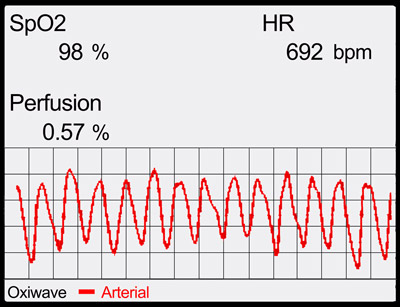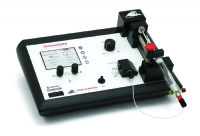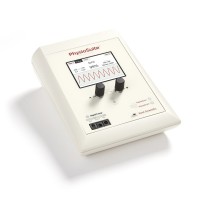Available Mouse Pulse Oximeter Sensors
The MouseSTAT Paw Sensors for mice and rats (SPO2-MSE and SPO2-RAT) were specifically designed for small laboratory animals. They use a miniature LED and light sensor to transmit and receive the red and infrared light that are proportional to the size and translucence of the small laboratory paw.
The larger MouseSTAT Sensor for larger animals (SPO2-LG) is ideal for penetrating thicker tissue, such as that on a rat or larger animal. It can be used on any animal and on any appendage with sufficient vascularization and irrigation. This can be a mouse paw, but more commonly is a rat paw, rabbit ear or small animal tongue.
We also offer a selection of MRI compatible sensors to choose from.
*Respiratory rate accuracy may be influenced be your study protocol. Please feel free to contact one of our product specialists to discuss your specific application.
What Makes Our Sensors Different?
Other mouse pulse oximeters use human-size sensors mechanically adapted for small animals. These adapted human-sized sensors have large LEDs and light sensors that were designed to work on a human index finger or other like appendages. The large LEDs flood a boney appendage such as a finger with a tremendous amount of light, which is mostly absorbed or blocked by the bones and connective tissue. Since only a small amount of light passes through a finger, a large sensor is required to attempt to collect as much of the minute amount of transmitted light as possible.
When the human-sized sensors are attempted to be used on a translucent small laboratory animal paw, there is too much light delivered, which overflows the large light sensor. Therefore, the adapted human pulse oximeter sensors from other manufacturers need to use thick sections of the small laboratory animal body that approximate a human finger, such as the neck or thigh. Placing the sensor in these locations typically requires the extra effort of shaving the area. The higher force spring in the sensor clips may cause ischemia in the sensing area from the continuous squeezing pressure.
Finally, other pulse oximetry systems also require a dedicated external PC to operate, which takes up valuable lab bench and surgical area space.


